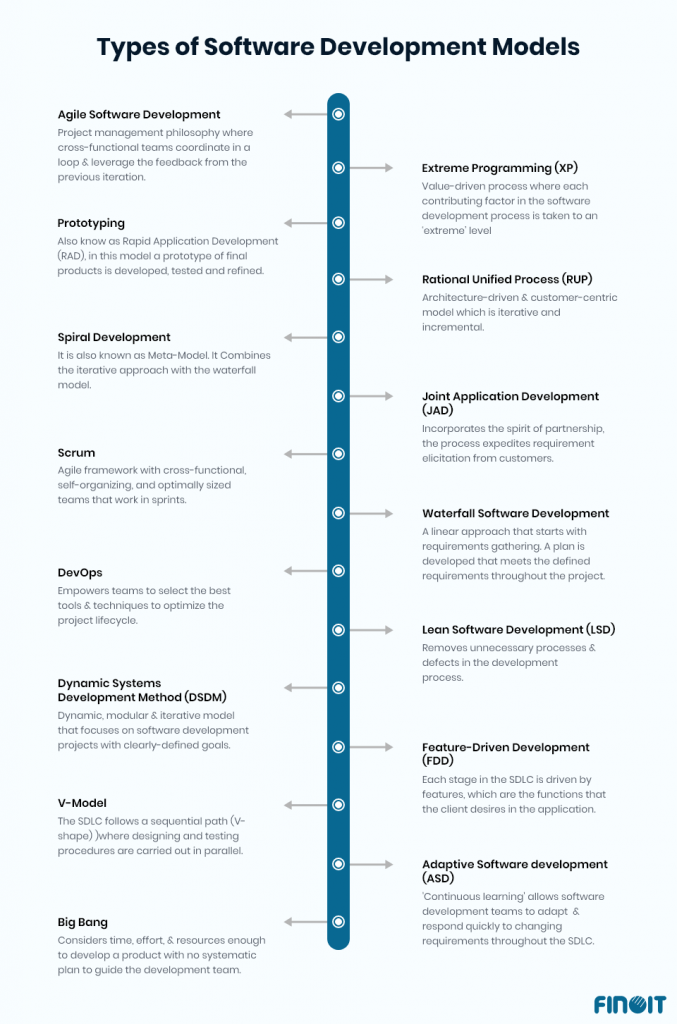Top 15 Software Development Models (Not Just Agile And Waterfall)
Dwelling on the right software development models has acquired prominence in software development. Choosing a software development model and freezing it as a long-term prototype is an invalid proposition, as each software development project brings its own set of requirements. Having an all-inclusive knowledge of various software development models has thus become indispensable. Explore this compendious guide to make a prudent selection of a software development model.
The software revolution began in the United States and soon became a worldwide phenomenon. In the 90s, when software and modern computers were in the nascent stage, it would take an average of three years for software teams to deliver a software application.
Soon computers entered the mainstream business world, and the offer of a promising future became all the more reason to why develop software. Eventually, software development began to demand a more robust and systematic approach to development.
From waterfall to agile, with time, different types of software development models began to hit the software development landscape. Software development no longer followed a fixed approach. Faster deployments, rapid releases, and improved coordination and collaboration became the criteria for choosing the right software development methodology.
As business outcomes are largely dependent on what software development model you choose, here is our guide to acquaint you with various types of software development models.
Mục lục bài viết
What is a Software Development Model?
A software development model is a series of processes that are carried out by software development companies to develop software applications. Software development models thus serve as a blueprint for managing the end-to-end software development pipeline. Each methodology works against the constraints of cost and resources, where cost refers to time and money, while resources reflect human and infrastructural resources.
What is SDLC (Software Development Life Cycle)?
The framework that offers a systematic sequence of key stages for developing a software application is termed the software development life cycle (SDLC). Planning, Requirements gathering, Analysis, Design, Implementation, Testing (Quality Assurance), Deployment, and Maintenance are elemental stages in SDLC. Each of these stages adds value to the software development process, thereby aiding in building the application from concept to program to usable application.
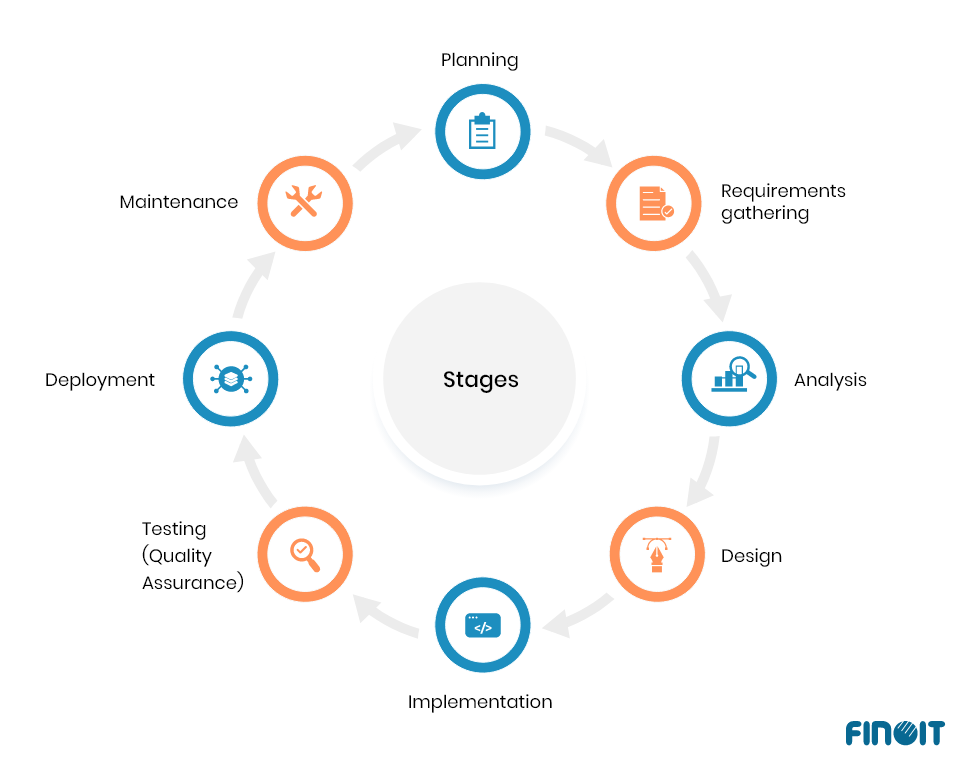
Types of Software Development Models
The field of software development has been consistently evolving and it’s no longer limited to the Agile or Waterfall framework, as is commonly believed. Today, different types of methodology in software development exist, each of which has been conceptualized with a purpose. Here, we dive into the details of those various types of software development life cycle models.
Agile Software Development Model
Agile was brought into existence as a concept by a combined research of 17 developers at their meetings in Oregon and Snowbird, Utah in the United States (US).
Agile is a front-rank software development model today. Continuous improvement forms the basic premise of agile software development methodology. Iterative in nature, this approach easily accommodates changes in software development projects.
Basically, agile is a project management philosophy in which cross-functional teams coordinate in a loop and leverage the feedback from the previous iteration for further improvement. Thus, it also serves as an umbrella concept under which different software development models such as Scrum, Adaptive Software Development, Spiral Development, and Feature Driven Development fall.
As an incremental approach, the agile methodology progressively addresses every possible risk and adds value to the product, thereby leaving no scope for shortcomings. The process prioritizes customers instead of restricting the development cycle just to technology.
Following the principle of modularity, the project is broken into manageable components, which streamlines the development process.
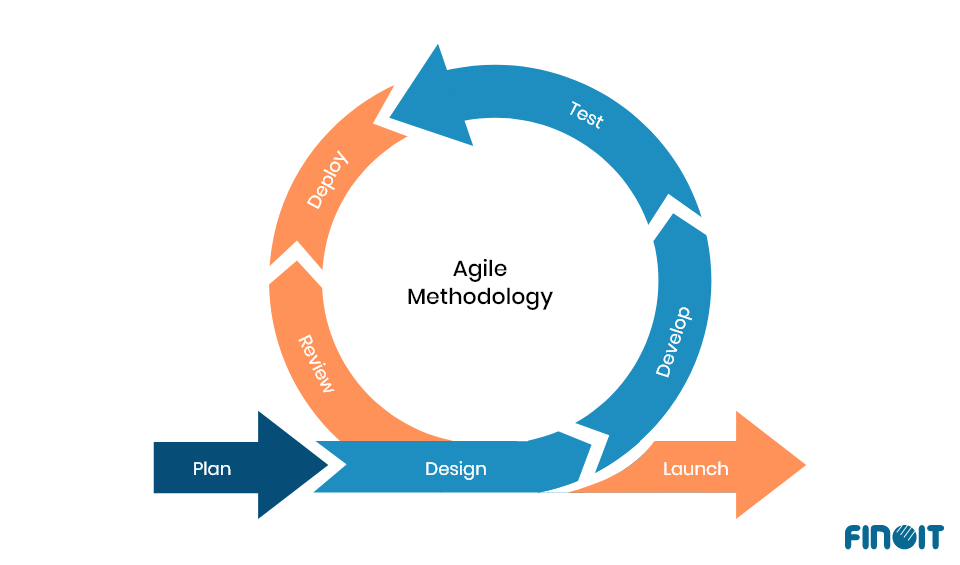
Extreme Programming (XP)
Extreme programming (XP) emerged as a software development model to facilitate the quick delivery of quality software applications. It works as a lightweight development methodology that is highly productive and highly tolerant to variations.
Right from development practices to the capabilities of team members, each contributing factor in the software development process is taken to an ‘extreme’ level. Hence the term extreme programming.
XP is a value-driven process. The values it defines include:
- Communication
: Smooth communication is the key to a project’s success.
- Simplicity
: Systems should be simple but address every complexity.
- Feedback
: Feedback from every stakeholder at all scales is essential.
- Courage
: The team must be able to take practices to the extreme level.
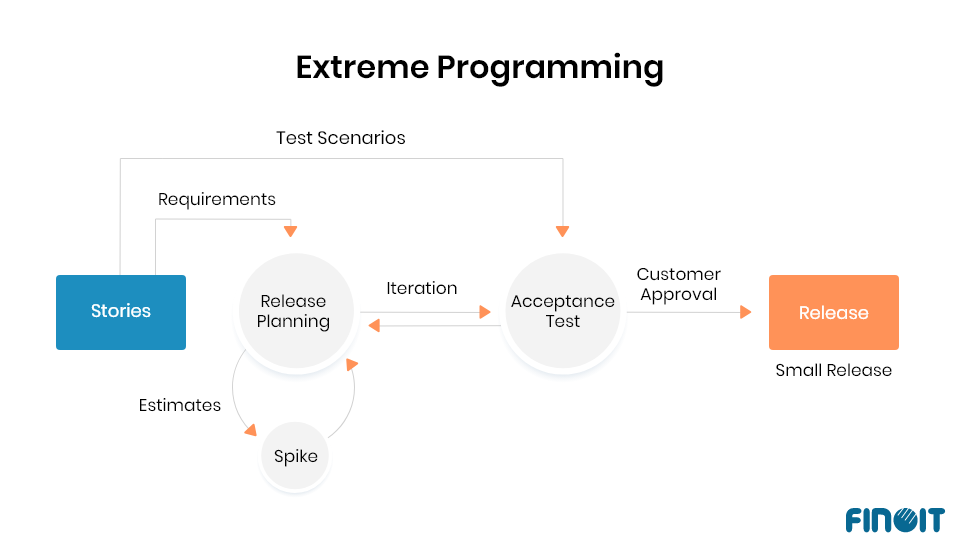
Prototyping
In this software development model, a prototype of the desired application is built, which serves as a replication of the final product. Best fitted where customers themselves are unsure of the project requirements, prototyping helps in developing, testing, and refining the concept till the acceptable product is attained. While there are similarities prototyping should not be confused with an MVP. A prototype tests the basic concept; an MVP in software development tests features and saleability.
This software development methodology is also addressed as rapid application development (RAD), since its speeds up the development.
There are four ways prototyping can be driven:
- Rapid Throwaway prototyping
: With customers in the loop, different ideas are tested and rejected in quick succession.
- Evolutionary prototyping
: As a piece of application, the product evolves progressively.
- Incremental prototyping
: Prototypes are built in parallel, evaluated, refined, and merged.
- Extreme prototyping:
It simulates web applications and builds excellent user interfaces.
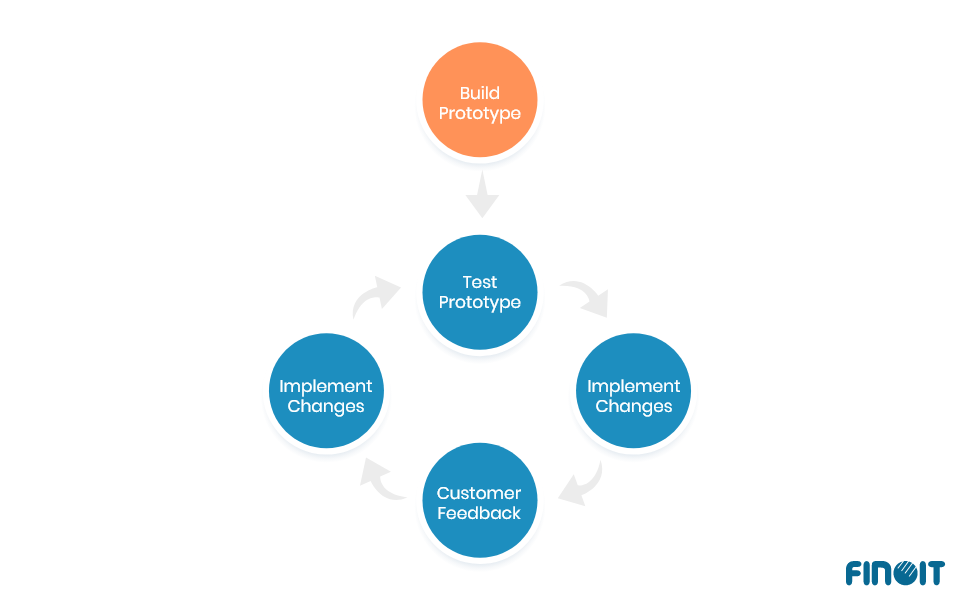
Rational Unified Process (RUP)
Rational Unified Process (RUP) is an architecture-driven and customer-centric software development model. Architecturally, it has two dimensions: the horizontal dimension represents time and shows the progress of the project. On the other hand, the vertical dimension represents different stages in the development process.
RUP comprises four phases, which are:
- Inception
: Initiates the project with a rationale, defines the scope, and provides a conceptual prototype.
- Elaboration
: Drives deeper analysis, goes into details of requirements, and builds an architectural baseline.
- Construction
: Drives iterative analysis, designing, building, and testing of the product features.
- Transition
: Packages the product after performance tuning and trains new users and seeks feedback.

Spiral Development
Spiral software development methodology combines the iterative approach with the waterfall model. It is therefore also called Meta-Model. When represented graphically, the workflow appears as a spiral, since sequential attributes amalgamate with the prototype features.
This software development model adapts easily to changes and is thus best suited for large-scale software development projects.
The four key components of the spiral model are represented by the four quadrants of the spiral. These are:
- PlanningDefine project objectives , and evaluate constraints and possible alternatives.
- Risk Analysis
: Identifying potential risks and strategizing risk mitigation.
- Construction
: Designing, developing, and testing the software prototype.
- Evaluation
: Determining the product performance and planning the next iteration using customer feedback.
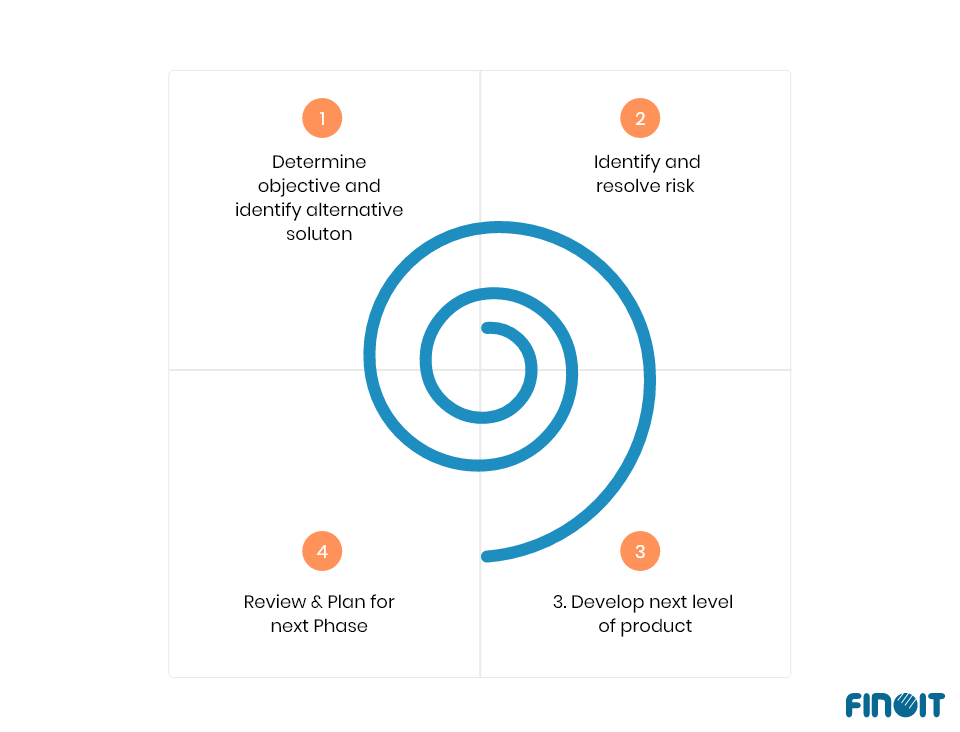
Joint Application Development (JAD)
This model of software development involves implementing group dynamics to accurately determine business requirements and ascertain the customer vision. Stakeholders – business users/customers, subject matter experts (SMEs), software architects, and developers brainstorm ideas in workshops to derive inputs for triggering the development.
As JAD incorporates the spirit of partnership, the process expedites requirement elicitation from customers. Meetings serving as forums of value-adding discussions help in clearly defining software project goals.
JAD is based on the following four ideas:
-
Users doing the job must best understand what they are doing.
-
Technical team must be well-versed in the technology and frameworks being used.
-
The software development process must align with the business process.
-
Individual groups must work in tandem with a single goal in mind.
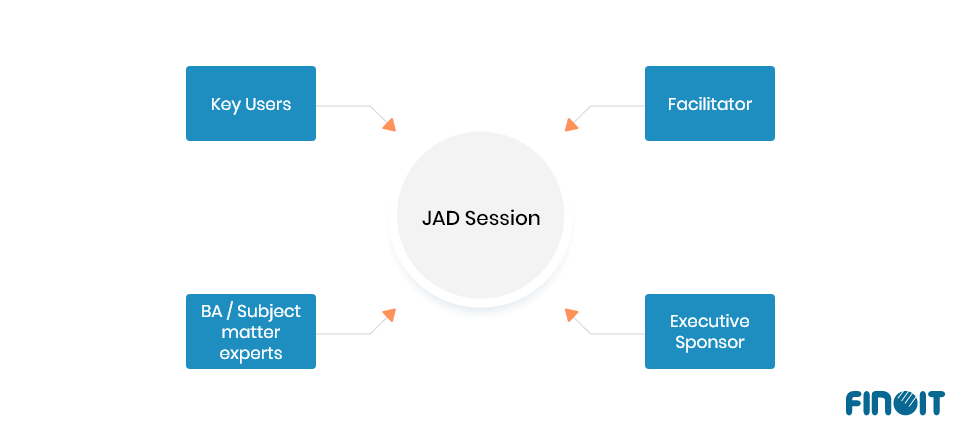
Scrum
Popular in today’s software development landscape, Scrum is a software development model that adopts an adaptive approach to developing applications. It’s an agile framework that involves dynamic cross-functional self-organizing optimally sized teams that sustainably work in sprints to continuously improve their focus and efficiency.
Scrum clearly defines three important roles, which are product owner, scrum master, and development team. Here is how each of these three team elements provides their contribution.
- Product Owner
: Right from the burn-out chart, establishing product vision to maintaining the product backlog, the product owner guides other team members along the product journey and tries to maximize the product value.
- Scrum Master
: A central element in the Scrum process, this role implements Scrum standards and ensures the highest productivity of the Scrum team. Responsibilities include coaching team members, driving high-value increments, getting rid of impediments, and driving actions that generate positive results while being in the timebox.
- Development Team
: Comprises technical experts who create functional increments in each sprint. They build plans for sprints and the sprint backlog, and are accountable for positively accommodating changes to reach the sprint goal.
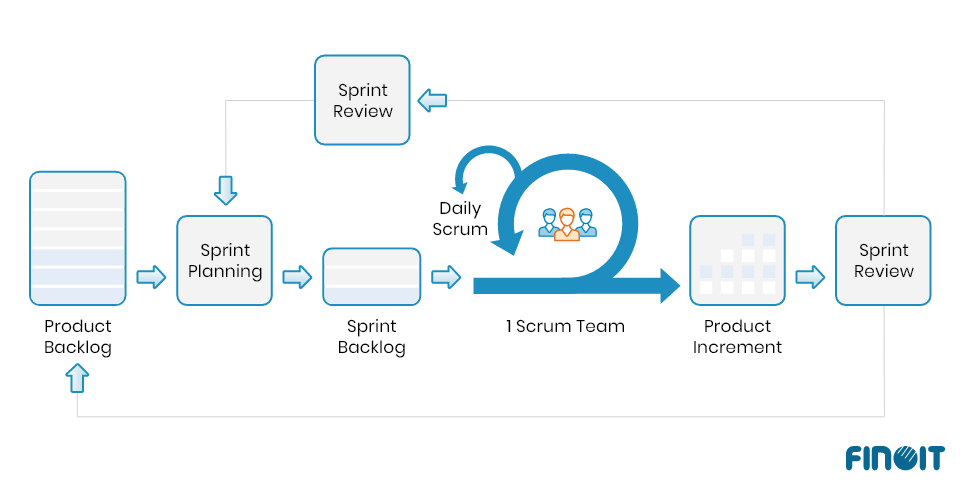
Waterfall Software Development Model
Traditionally, the best recourse, the model owes its name to its structure which resembles a waterfall, with each phase cascading into the next.
It is a linear project management approach where the requirements are gathered at the beginning of the project. The project team develops a plan that can meet the defined requirements throughout the sequence.
The waterfall model is made up of five phases, sequentially mentioned here:
- Requirements gathering and analysis
: Identifying the problem, defining the scope, and building the execution plan.
- Design
: Creating a design framework using requirements.
- Implementation
: Developing code/programs considering the specifications.
- Testing
: Subjecting programs to quality assurance processes to validate their performance.
- Maintenance
: Ensure performance consistency and improve the application to suit the changing environment.
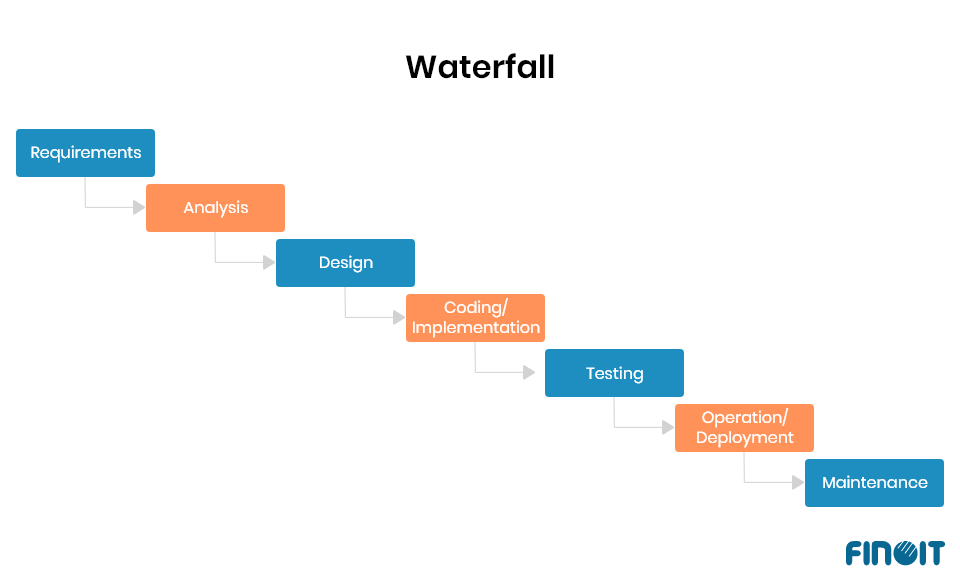
DevOps
DevOps is a philosophy that has emerged as a silver bullet in software development. As can be interpreted, it combines the development team’s efforts with those of operations and reduces friction between them.
Streamlining coordination and communication, DevOps, thus, brings transparency to the development process, facilitates better integration, and improves visibility.
As a dynamic methodology, DevOps imparts remarkable flexibility to teams who can choose from a range of tools and techniques to best execute the project. So, they can combine approaches like Scrum with quality tools like Kanban to optimize the project lifecycle.
Automation and continuous improvement are two critical aspects of DevOps practices. Each phase in the process follows the ‘continuous’ paradigm, and so issue resolution and ultimately the product delivery acquires pace.
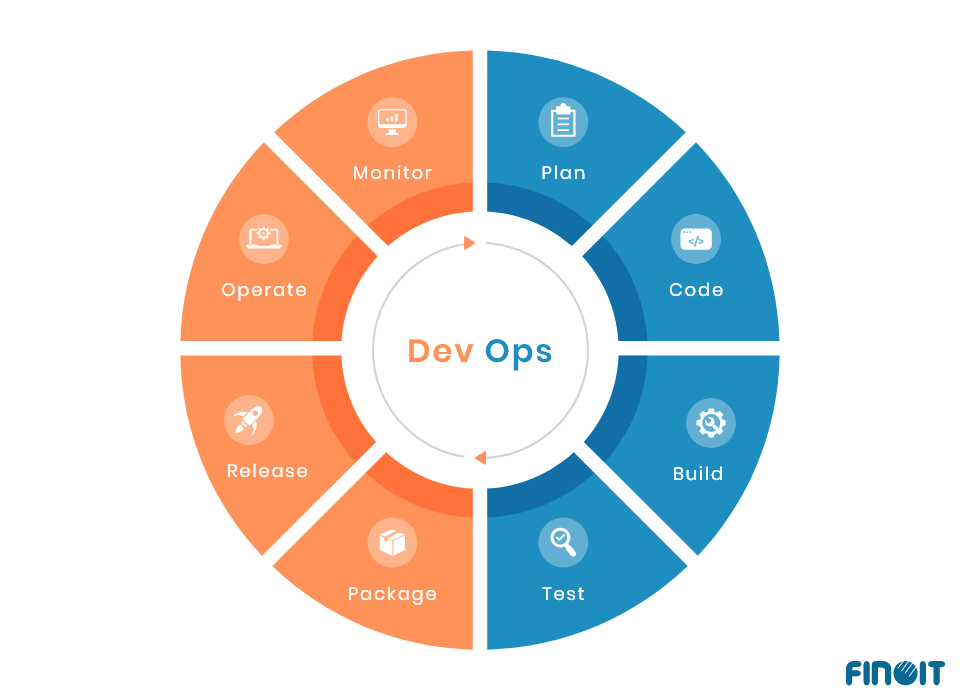
Lean Software Development (LSD)
In Lean software development methodology, lean principles are adopted in software development, which eliminates waste and optimizes time. Since in LSD, a bare-minimum version of the product is released, this software development method is also called Minimum Viable Product (MVP) strategy.
Borrowed from lean techniques in the manufacturing industry, Lean software development removes unnecessary processes and defects in the development process. Here are some of the waste elements that can be effectively managed using Lean:
-
Extra features and steps
-
Partially completed tasks
-
Waiting
-
Defects
-
Handoffs
-
Task switching
-
Motion
To be successful in lean implementation, organizations need to possess strong capabilities in Lean principles and agile software development. Technology giants like Xerox have implemented Lean software development method in their product innovation projects.
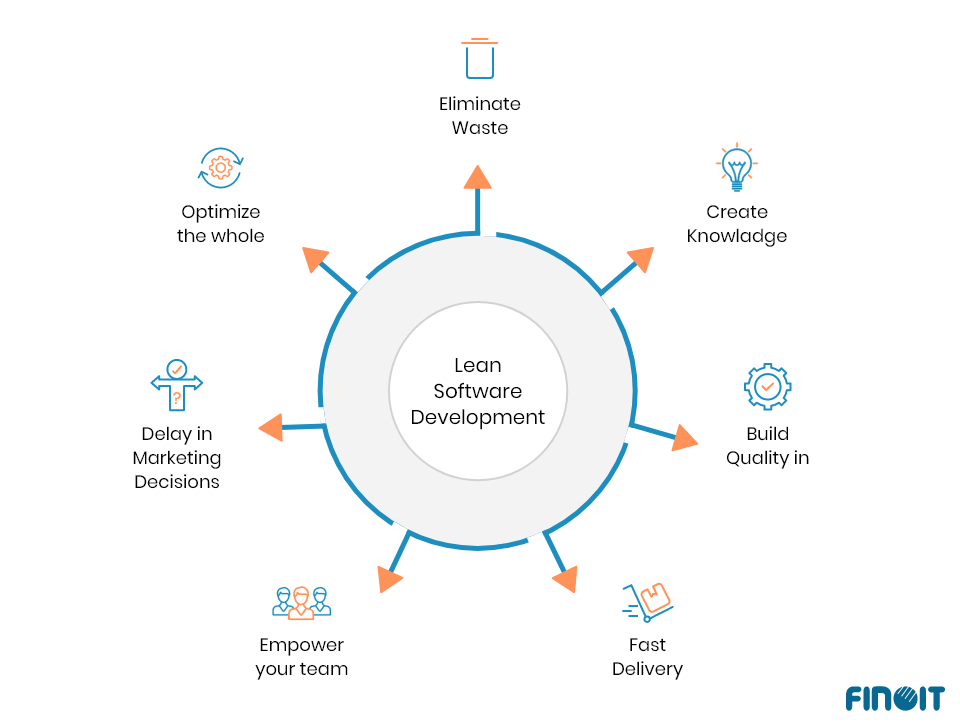
Dynamic Systems Development Method (DSDM)
Subscribing to agile philosophy, the Dynamic Systems Development Method (DSDM) is an iterative software development model that focuses on software development projects with clearly-defined goals.
DSDM is a dynamic and modular system, and the project is broken into the following three phases:
- Pre-project Phase
: Considers factors such as if the project should be executed, and which resources to include.
- Project life cycle Phase
: The focus is on refining the business dimensions of the computer system.
- Post Project Phase
: Measures the performance of the deployed system to check if it demands enhancements.
DSDM has 9 core principles, which are:
-
User involvement
-
Team empowerment
-
Frequent Delivery
-
Business is capable of the delivery
-
Iterative and incremental process of development
-
Reversible change structure
-
High-level requirement baselining
-
Continuous testing across the life-cycle
-
Collaboration and Coordination
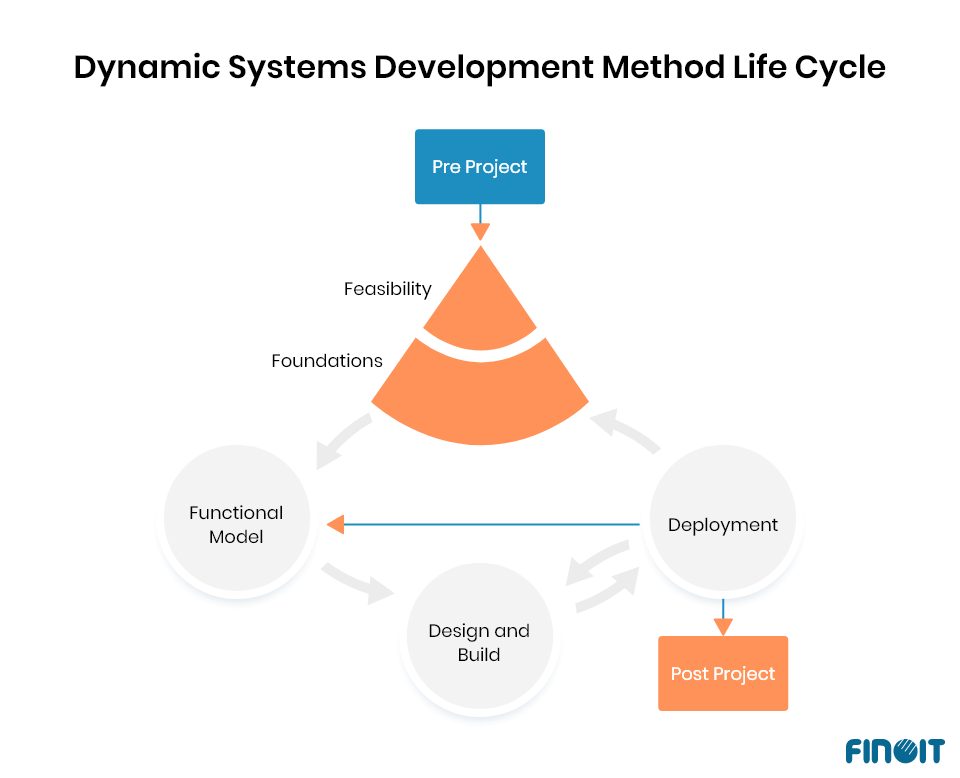
Feature-Driven Development (FDD)
In this software development method, the development is centered around features. Each stage in the software development life cycle (SDLC) is driven by features, which are the functions that the client desires in the application.
Feature-driven software development is characterized by ‘quality at each step’ and comprises the following five phases:
- Develop an Overall Model
: An UML model representing attributes and relations is conceptualized.
- Build a feature list
: An exhaustive list of all the desired features is built.
- Plan by feature
: Fixing the course to decide how to implement the feature.
- Design by feature
: Preparing feature set and deciding activities for each feature.
- Build by feature
: Developing and testing the code and programs for implementing the features.

V-Model of Software Development
Termed as Verification and Validation software development model, the V-Model involves parallel execution of designing and testing procedures. The sequential path that the SDLC follows takes the form of a V-shape. Before the process moves to the next phase, the preceding phase must be complete.
Right from business requirements gathering to coding, each operational stage in the SDLC is complemented with an appropriate verification and validation process. For instance, for systems requirements system testing is performed.
A positive side of V-Model is that testing starts from the beginning of the development process, which prevents the downward flow of defects. As a result, V-Model significantly improves the product quality right from the early stages of development.
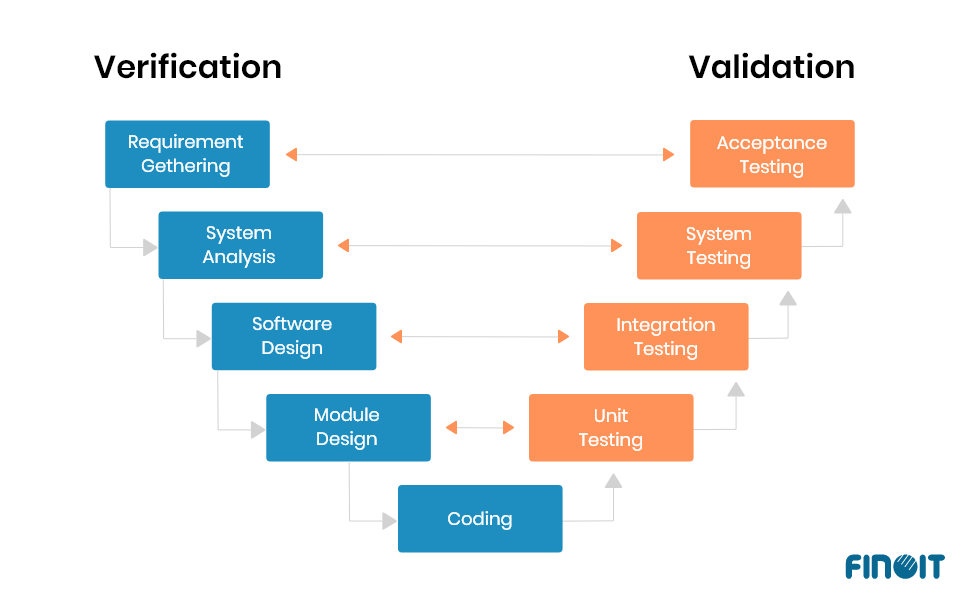
Adaptive Software development (ASD)
This software development model is based on the idea of ‘continuous learning’, which allows the team to quickly implement the required measures. The idea to adapt throughout the software development life cycle also allows software development teams to quickly address the changing requirements.
Speculate, Collaborate, and Learn are three pillars on which the adaptive software development life cycle is based. Here is a snapshot of these three components.
- Speculate
: Explore plans and accommodate uncertainties in the project.
- Collaborate
: Team members continuously share knowledge across the lifecycle to jointly produce results.
- Learn
: Analyze iterations and identify the scope for further improvement.
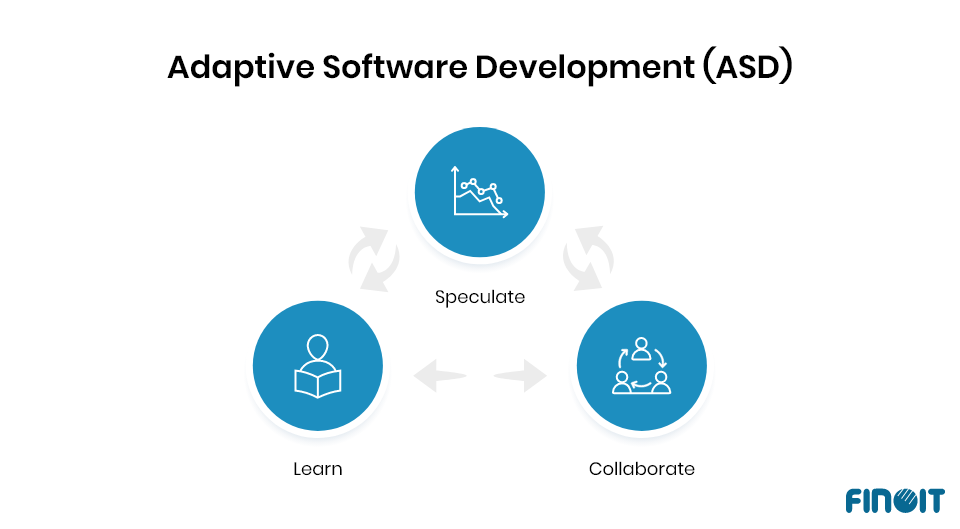
Big Bang
Deriving its name from the famous cosmological theory Big Bang, the Big Bang model of software development is famous for minimal planning with which it can be executed. Planning and practices don’t form a precursor to initiating the software development project. Like the big bang concept, the product emerges from absolutely nothing to the final product.
As per Big Bang, three elements – time, efforts, and resources are enough to develop a product. There’s no systematic plan that guides the development team that drives the development in a laissez-faire manner. The features of this model make it suitable for small software development projects.
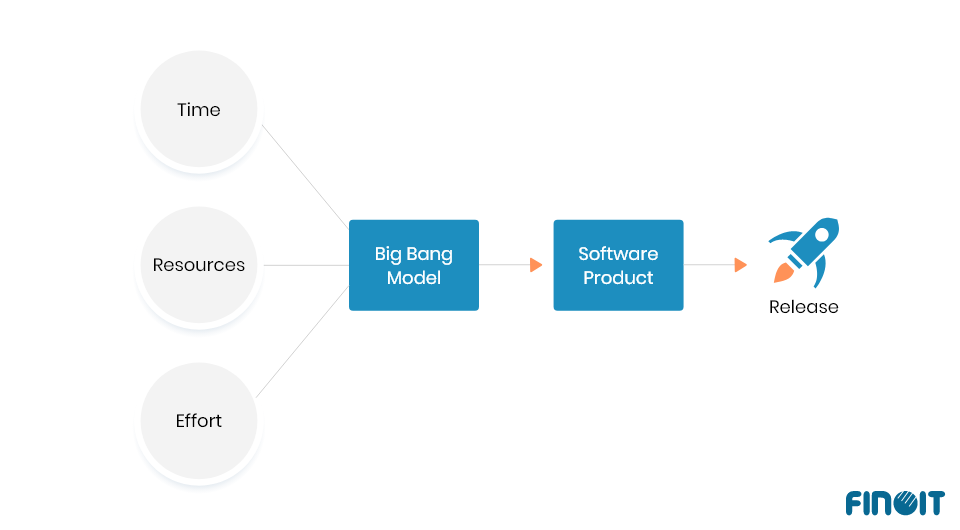
How do you choose the best software development process model?
The software development model that you will choose will impact the product’s success and ultimately the perception of the users about your business. So, choosing the right software development model is not merely restricted to a software development project’s success but extends right across to the business’s success.
To complement your strategies with a high-performance application and successfully implement them, choosing the most appropriate software development model requires you to diligently execute a series of steps, which are:
-
Understand niceties of each software development model
-
Collect the client and the project information
-
Check which methodology would complement the requirements and meet the budgetary constraints.
Along with this, choosing the best software development methodology for your software development project requires you to strictly consider the following factors:
Non-technical factors
Technical factors
Project goal
Engineering skill sets
Project scope
Tools and Techniques
Time frame
Team experience
Delay cost
Team size
Client involvement
Frameworks
Project complexities
Infrastructure
Project conditions
Cost per resource
Bank on the right software development model
Each of the various types of software development models that we saw here is a separate theory in itself. We have made a genuine attempt to best familiarize you with each of these software development models within the confines of this blog.
The selection of software development process models will always be driven by your software project goals. You must therefore map the goals with the model, as you filter your choices.
As we saw, each model is peculiar in its own sense, and its applicability will depend upon the project’s nature.
To know which model you should implement, consider seeking consultation from our software development experts.
